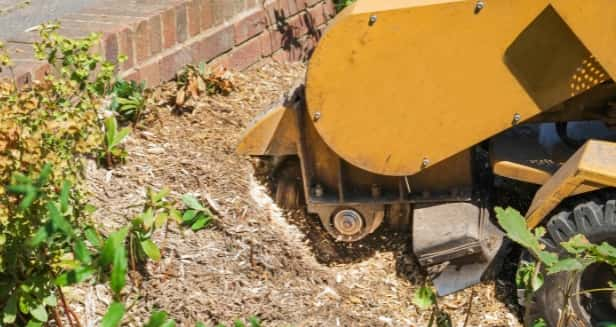Tree care is about more than keeping your garden tidy — it’s about ensuring long-term health, safety, and balance within your landscape. One of the most effective ways to maintain mature trees is through crown reduction, a professional pruning technique that helps control size and shape while preserving structural integrity. At NS Tree Surgery Dorking, we carry out expert crown reduction services across Dorking, Surrey, helping property owners keep their trees healthy, safe, and visually appealing.
What Is Crown Reduction?
Crown reduction is a targeted pruning process that reduces the overall height or spread of a tree’s canopy. Rather than cutting back branches randomly, it involves carefully trimming specific sections of the outer crown to reduce weight, relieve stress on limbs, and allow more light to filter through.
The goal is not to drastically alter the tree’s appearance, but to manage its size and maintain its natural shape. Unlike topping (an outdated and damaging practice), crown reduction follows proper arboricultural principles to encourage healthy regrowth and long-term stability.
Why Crown Reduction Is Important
Trees are living structures that grow continuously. Without maintenance, they can become overextended, unstable, or hazardous — especially in built-up areas such as Dorking where trees often grow close to homes, roads, and gardens.
Here are the main reasons crown reduction is beneficial:
1. Reduces Weight and Prevents Breakage
As trees mature, their upper branches can become heavy and prone to splitting under their own weight or during storms. Crown reduction lessens this load, distributing weight more evenly and reducing the risk of falling branches.
2. Improves Safety Around Property and Public Spaces
Overgrown crowns can interfere with nearby buildings, footpaths, or power lines. Reducing the canopy helps keep your property and surroundings safe, particularly in windy or storm-prone conditions.
3. Enhances Tree Health
By allowing better air circulation and sunlight penetration, crown reduction helps prevent fungal growth and improves photosynthesis. It also removes weak, diseased, or crossing branches that could hinder healthy development.
4. Maintains a Balanced Structure
Trees with uneven growth can become structurally unstable. Crown reduction corrects imbalances by selectively pruning areas of dense or overreaching growth, ensuring the tree remains stable as it continues to grow.
5. Improves Aesthetics and Light Levels
Well-reduced trees maintain their natural form while fitting better within their environment. Crown reduction can also open up shaded areas of your garden, improving light access for lawns and surrounding plants.
When Should You Consider Crown Reduction?
Crown reduction should be carried out when the tree shows signs of overgrowth, imbalance, or structural stress. Knowing when to act can prevent more serious problems later on.
Common signs your tree may need crown reduction include:
- Branches extending too close to roofs, walls, or power lines.
- The canopy appearing top-heavy or leaning to one side.
- Large limbs showing signs of cracking or stress.
- Reduced light reaching gardens or windows due to dense foliage.
- Tree movement or instability during strong winds.
In some cases, crown reduction may also be recommended after storm damage or to reshape the tree following poor pruning in the past.
The Best Time of Year for Crown Reduction
Timing is crucial to ensure a healthy outcome. For most tree species, the ideal time for crown reduction is late winter to early spring — before the growing season begins. During this period, trees are dormant, which helps minimise sap loss and stress while encouraging quick recovery.
However, not all trees are the same. Some species, particularly those that bleed sap (like birch and maple), may benefit from light pruning in late summer instead. At NS Tree Surgery Dorking, we assess each tree individually to determine the most suitable time and method based on its species, age, and condition.
How Crown Reduction Is Performed
Crown reduction is a skilled procedure that requires both technical knowledge and precision. A professional tree surgeon follows a methodical process to ensure the tree’s health and appearance are preserved.
The process typically involves:
- Assessment: Evaluating the tree’s size, structure, and any potential hazards.
- Selection of Branches: Identifying which areas require reduction and determining appropriate cut points.
- Selective Pruning: Carefully cutting branches back to secondary growth points, maintaining the tree’s natural outline.
- Balancing the Canopy: Ensuring the remaining branches form a symmetrical, well-distributed shape.
- Final Inspection: Checking stability and clearing debris to leave the site tidy and safe.
Each cut is made with precision to prevent unnecessary damage and promote healthy regrowth — something only experienced professionals like NS Tree Surgery Dorking can guarantee.
The Difference Between Crown Reduction and Other Pruning Techniques
Crown reduction is often confused with other forms of pruning, but each serves a different purpose.
- Crown Thinning: Involves selectively removing small branches throughout the canopy to increase light penetration and air circulation without reducing overall size.
- Crown Lifting: Removes lower branches to create more space beneath the canopy, improving access and visibility.
- Crown Reduction: Focuses on reducing the overall size of the canopy while preserving the natural shape and health of the tree.
Choosing the right technique depends on your tree’s needs and the surrounding environment. At NS Tree Surgery Dorking, we advise on the best approach to achieve your desired outcome safely and effectively.
Benefits of Professional Crown Reduction
While it may be tempting to attempt pruning yourself, crown reduction requires expertise and specialised equipment. Incorrect cutting can lead to long-term harm, such as decay, weak regrowth, or even premature tree failure.
By hiring skilled arborists from NS Tree Surgery Dorking, you benefit from:
- Expert knowledge of tree anatomy and growth patterns.
- Safe, efficient work using professional equipment.
- Clean cuts that encourage healthy healing.
- Long-lasting results that enhance both safety and appearance.
Properly performed crown reduction not only improves the health and safety of your tree but also protects your property and enhances the landscape’s overall aesthetic value.
How Often Should Crown Reduction Be Done?
Crown reduction is not something that should be carried out frequently. Most mature trees only require it every few years — depending on species, growth rate, and location. Over-pruning can weaken a tree, so a professional inspection helps determine the ideal maintenance schedule.
At NS Tree Surgery Dorking, we create tailored maintenance plans for our clients in Dorking and across Surrey, ensuring each tree receives the right level of care at the right time.
The Role of Crown Reduction in Long-Term Tree Management
Crown reduction is just one element of responsible tree management. Combined with regular inspections, light pruning, and proper aftercare, it forms part of a comprehensive strategy to promote healthy, safe, and attractive trees.
Regular professional maintenance prevents sudden issues such as broken branches, storm damage, or uncontrolled growth. It also ensures your trees continue to enhance your outdoor space rather than pose risks to it.
Conclusion
Crown reduction is an essential part of maintaining mature trees, helping to preserve their health, shape, and safety for years to come. Whether it’s to manage size, improve light, or prevent structural problems, timely and professional care makes all the difference. For homeowners and property managers in Dorking, Surrey, NS Tree Surgery Dorking provides expert crown reduction services designed to protect both your trees and your landscape — ensuring every tree remains strong, beautiful, and balanced.
Call us on: 01306 776 298
Click here to find out more about NS Tree Surgery Dorking
Click here to complete our contact form and see how we can help with your tree needs.

